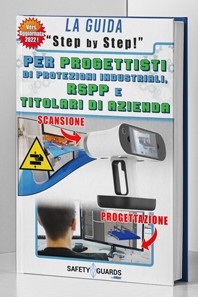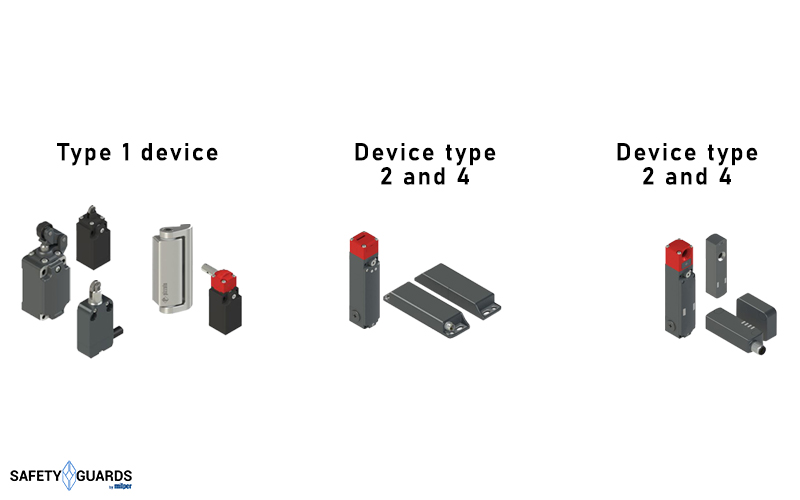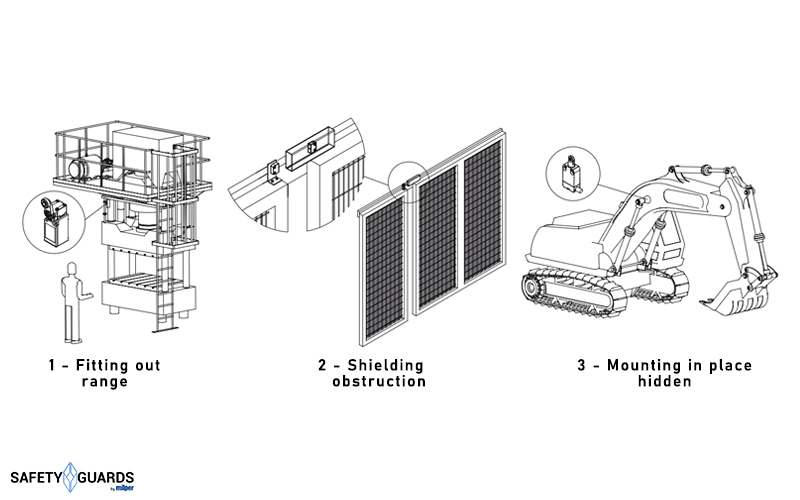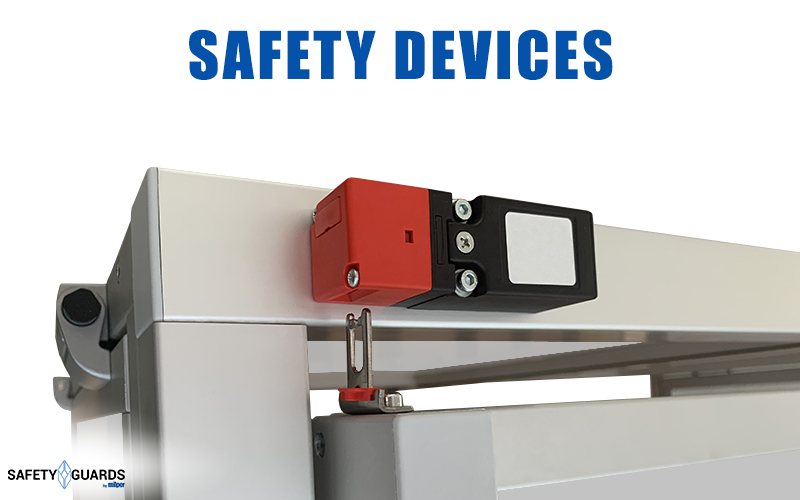SAFETY INTERLOCK SWITCHES
INDEX
1. SAFETY SWITCHES: EN ISO 14119
2. SAFETY INTERLOCKS: TYPES AND REQUIREMENTS
3. INTERLOCK DEVICES: RECOMMENDATIONS
4. SAFETY DEVICES IN SHORT
SAFETY SWITCHES: EN ISO 14119
If you work for a Technical Office, are an entrepreneur or have to manage production as a department head, you will certainly be interested in learning about the EN ISO 14119 technical standard, which replaced EN 1088:199+A2.
The technical standard refers to the Safety Devices, which have the task of preventing operation if the Protection Systems are not closed. Thanks to this technical standard, you have the possibility to create suitable Interlocking Devices and obtain a correct installation since the necessary requisites for having a guarantee against accidents are specified.
Not only that, the parameters are also highlighted so that tampering is not possible. The aim is therefore to dictate the principles necessary to design and choose the Safety Interlocks, according to the type of actuator and coding level, but also the measures to correctly install the Safety Devices, improving the associated guard.

SAFETY INTERLOCKS: TYPES AND REQUIREMENTS
The Safety Devices are of different types:
- Type 1: Mechanically actuated by a hinge, rotary cam or linear cam actuator, uncoded.
- Type 2: mechanically operated with coded actuator (key with separate or trapped actuator).
- Type 3: non-contact actuation, with non-coded actuator, operation is inductive, magnetic, capacitive or ultrasonic.
- Type 4: non-contact actuation, with coded actuator. It works with a coded magnet.
The requirements are based on the application of principles and measures (at least one), which prevent disregarding the Protection System. For type 1 devices, the device must be placed in an inaccessible point, protected by an obstacle, hidden or monitoring tests must be performed which signal if the Accident Prevention Guard is opened.
This applies to Rotary or Linear Cam Safety Switches, however if it is a Type 1 Safety Hinge Interlock, you will need to attach the Safety Device and actuator.

INTERLOCK DEVICES: RECOMMENDATIONS
With type 2 and 4 Interlocking Devices with low coding level, you must adopt at least one of these measures: mounting in an unreachable or invisible point, setting up an obstacle or shielding or carrying out the monitoring.
In these types, there is an obligation to make the Safety Device irremovable and there is a recommendation to verify the validity of the device itself. Furthermore, the devices of type 2 and 4, equipped with actuators with a high level of coding, only require that the Safety Device have a non-removable fastening, so that the operator cannot disassemble them, running the risk of being injured.
As you can see, the technical standard focuses on design or control training, combined with command. Machinery must therefore be designed to eliminate the desire to bypass Interlocking Devices.


SAFETY DEVICES IN SHORT
At the end, we can say that using carefully designed Safety Devices, you can make the whole procedure safe, avoiding dangerous injuries. The EN ISO 14119 technical standard is therefore aimed at those who design, manufacture and use machinery, with control devices where the Interlock Safety Switches are a tool that you can use to prevent the machine from being started when the Accident Prevention Guard is open .
As we have said, since 2013 the technical standard regulates the subdivision of Safety Devices, into four types (mechanical coded and contactless, coded and non-coded) and underlines the importance of limiting the possibility of circumvention, which would make the Safety.

